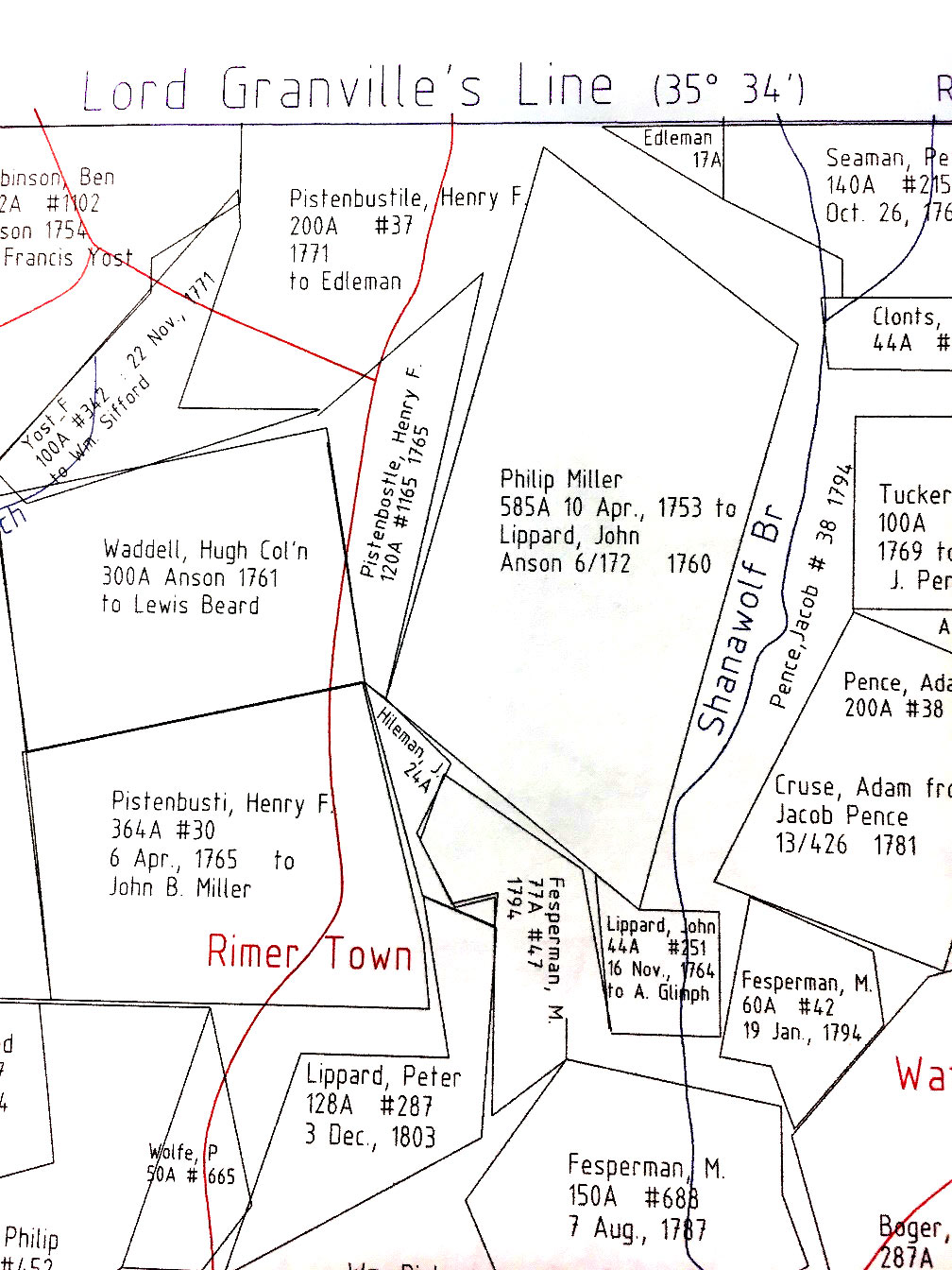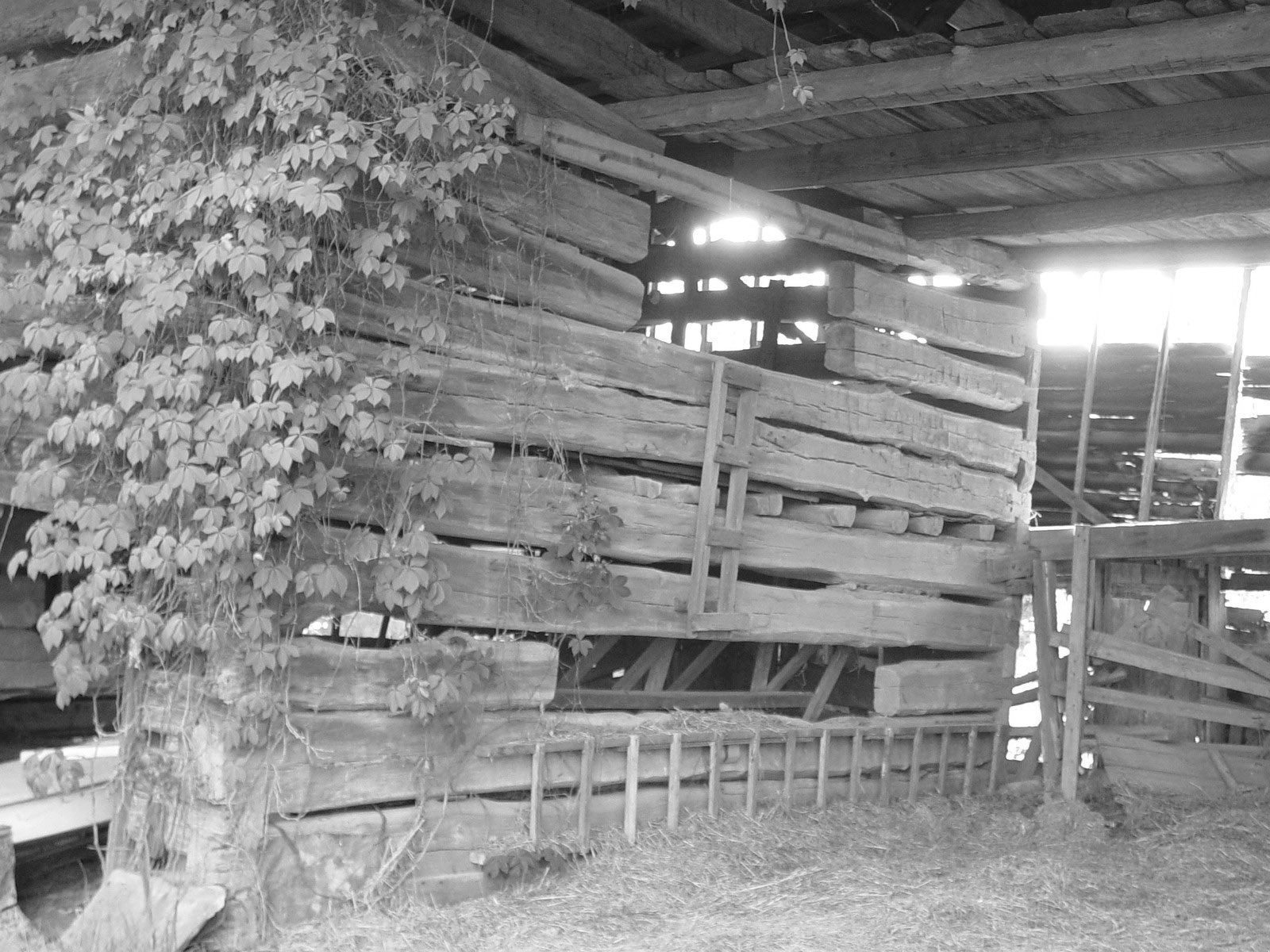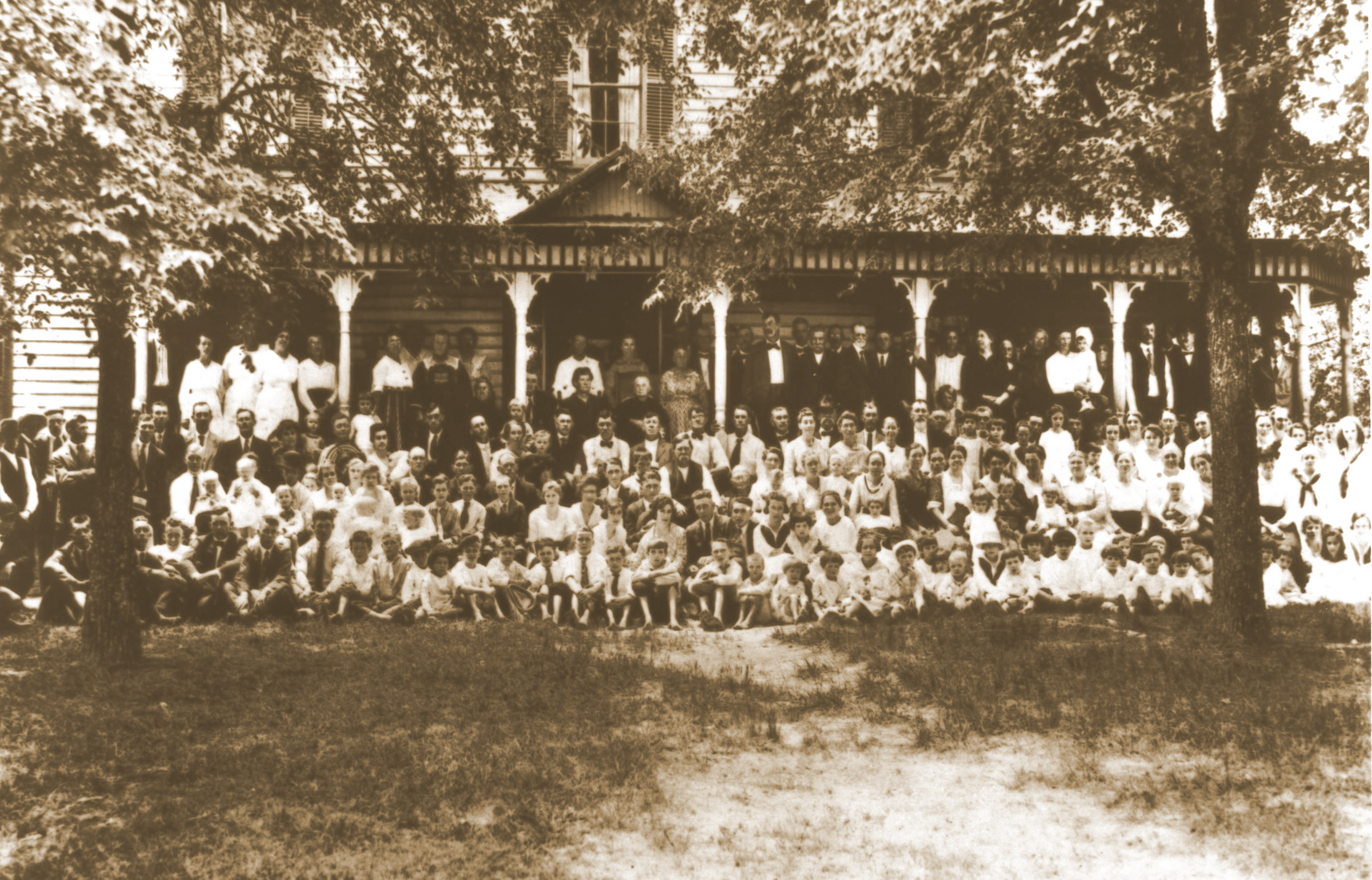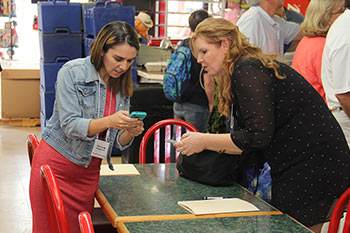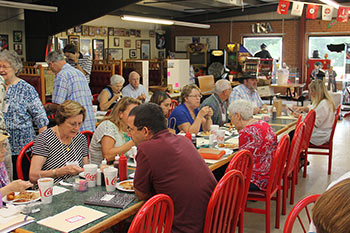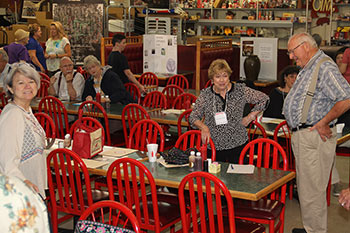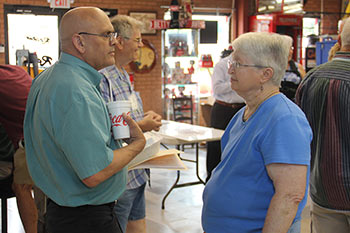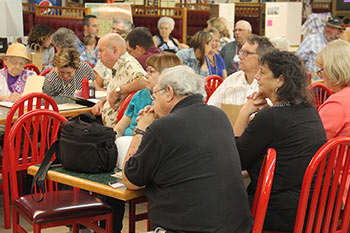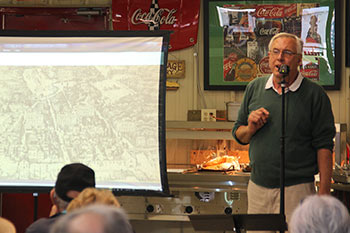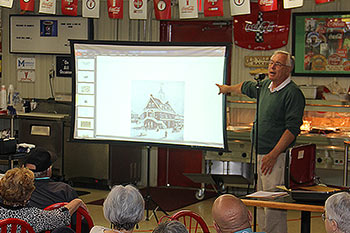CHAPTER 17
JOHANNES/JOHN LIPPARD
(Conrad, Wilhelm Lineage)
Johannes Lippard was born in 1734 in Germany. He must have come south with his father Wilhelm in 1754 to Virginia, then shows up in Rowan County records by the late 1750's although he was not naturalized till 22 Sept. 1763.
It is unclear exactly where John Lippard lived once his and Wilhelm's families arrived after the massacre in Virginia. He may well have been living on what became his longtime home by the late 1750's. It was located along Shaneywolf Creek, just to the south of the Granville District line that divided Rowan and Anson counties. A 1766 land warrant filed in Mecklenburg County noted that Peter Seamon "at the head of branch of Dutch Buffalo Creek" lived on the Earl's Line between "John Leopard" and Michael Christian. (The reference to the Earl was to Granville). His father Wilhelm's farm was located just to the southwest; it was likely that their homes were about three miles apart.
However he made a living in the early days, he must have prospered, for his first purchase was fairly sizable given German habits of the time. On 8 December 1760, he purchased 585 acres on the Earl's line from Philip Miller, Sr., "a cooper" of Craven County, for 24 pounds Proclamation money. (Miller was likely a land speculator.) This property adjoined the property of Barnot Shiarewolf and the division line between Rowan and Anson Counties. The sale was witnessed by Martin Phifer and W. M. Powell. This property would be the basis of his homestead for the rest of his life.
That he was prosperous is evident from the way he went about supplementing his holdings on the edges of his original tract. On 16 November 1764, John purchased 44 acres on "Dutch Buffelow Creek" in Mecklenburg County joining his own line to the east and that of Governor Arthur Dobbs, who owned tracts across the neighborhood.
He also shed some of the land, likely for a profit. On 15 July 1765, John sold to George Williams of Anson County, for 5 shillings sterling, 285 acres of the original 585 acres. On 16 July 1765 there is another recording of this same land transaction for 30£ current money of North Carolina. Paul Barringer, the most prominent resident of the Dutch Side, was witness to this deed. Then, on 25 August 1766, he sold to Abraham Glemph the tract of land on Dutch Buffalo Creek granted by King George in November of 1763 or 1765. This would have been located a bit to the west of the original grant on Shaneywolf Creek bought in 1760. Again, Paul Barringer was the witness, a testimony to John's standing within the German community.
John's farm then remained essentially the original purchase from 1760, and it must have been that one which he, his family, and his slaves worked for more than two decades. Since he purchased his first land and had his first child in 1760, it is likely that he first came to the farm that year, at the age of 26. His wife's name was Catherine but we have no record of her last name, and alas, no other clues that tell us of her identity. (No other genealogy of other German families in the immediate area have listed a Catherine marrying into the Lippard family.) John and Catherine had a fecund marriage. Their ten children came at the standard intervals common to the time, a sign of their health and devotion to one another.
Their children:
William (July 17, 1760-May 5, 1834),
Barbara (1763-1838),
Elizabeth (1766-1843),
John Jr. (Oct. 2, 1768-Feb. 26, 1821),
Christian (1770-1830),
Henry (1772-1833),
Daniel (1774-1802),
Peter (1776-1834),
Catherine (1780-1863, and
Frederick Andrew (Mar. 21, 1783-1830).
Given the spacing, it seems unlikely that there were any other children who died in infancy.
During the time, John also led an active civic and community life. He became a kind of minor "local notable" in what was called the Dutch Side, the German community that stretched from southeast of Salisbury down to the east of Concord, the seat of Cabarrus County established in 1762. He must have been respected from an early age, for he was put on the committee that was charged with the establishment of the seat of Mecklenburg County when it was created in 1762. That makes him, kind of, a founder of the city of Charlotte although there is no evidence he had any dealings with it later.)
John also served on a jury in Rowan County. The Minutes of the Rowan County Court of Pleas and Quarter Sessions record that in September 1764 the District Superior Court of North Carolina met at the courthouse at Salisbury under the presiding Judge, the Honorable Maurice Moore, to try the case of Daniel MacKee vs Robert Mitchell. The region covered by this District Superior Court extended over several counties, and it was considered an honor to be a member. The jurors were John Lippard and Paul Barringer from present day Cabarrus County; William and John Culpepper and John Lea from the present day Ansonville area of Anson County; Joseph Attaway also from Anson County; and James Carson, Daniel Lewis, Henry McHenry of present day Rowan County, William Simington of today's Iredell County, and Henry Harmon, who lived in what is Guilford County today.
A second way in which John's local reputation is highlighted is his service as a militia captain early in the American Revolution. In the Mecklenburg court records, John is shown as the elected captain of "Leopard district," one of the three majority German districts; the other thirteen were largely Scots-Irish. The tax assessors that year were George and Matthias Barringer, members of the most prominent Dutch family along Dutch Buffalo Creek. John seems to have served only one term, for by 1778 he became the tax collector for "Starnes's district . . . to which they belong." He served on both the grand and petit juries in 1779. He was called upon to witness deeds in 1777, 1782 and 1783.
For many years, it was assumed that John was simply a civic servant during his life but did not fight. Harriet had always suspected that John may have also been a Revolutionary War soldier, but could find no evidence. She eventually learned that John and Catherina's eldest son, William, enrolled in February 1780 in a South Carolina regiment that fought at the battle of Camden, North Carolina. He served for two years during which, at some time, he was wounded in the leg by a bayonet. As family members normally served in the same units, and no other Lippards were in the same one as William, she gave up on the idea that John, even though by this time forty-six years old, was in the military. In early 2014 she received an email from Bob Phelps, a Lippard descendant, describing a novel approach he has used to find the evidence we have been searching for. He decided to explore pension and other military records of John Lippard's neighbors in Cabarrus County and discovered that in a number of these records, the men involved reported that their commanding officer in the 4th Mecklenburg County Militia Regiment in 1777 and 1778 was John Lippard, and they fought the Cherokee in the mountains.
There are some problems with these accounts as Gary has found. The Mecklenburg regiment did exist, but there were no Cherokee or Tory battles to speak of during 1777, and in 1778 the area militia were sent to stave off an invasion by the British army of Savannah and Augusta. It is certain that Lippard served as an elected captain of his neighborhood in Mecklenburg, but if the enemy was the Cherokee, then the year was 1776 and John was part of the famous expedition to ruin the homes and livelihoods of the Cherokee in the depth of the Appalachians. The one true reference is from one of his soldiers, Henry Lentz who "commanded by Captain John Lippard" moved "against the Hiwassee towns"—today's Murphy, North Carolina—where there was "some skirmishing with the Indians and Tories". So, likely John was part of one of the more notorious invasions of the war, and likely in combat.
William Lippard, the eldest son, also served with distinction in the War for Independence, but he, too, has left a record riddled with inconsistent details. When he applied for a pension in the 1830's while living in Indiana, William said that he served first with the 3rd South Carolina regiment, then the 5th regiment. The problem here is that both of those regiments had been disbanded as Continental units before William's term of service. Since William said he lived in Mecklenburg County during the War, it is likely that he was part of a North Carolina militia unit first called up to defend the state from the British invasion of 1780. This unit would be incorporated into South Carolina state troops at some point. William claimed to have joined in February 1780 (which if true should have resulted in his becoming a prisoner at the siege of Charlestown), been at the battle of Camden, where North Carolina militia, including those from Mecklenburg, fled the scene and was said to have remained in service till March of 1781, again confusing because that would have put him at the battle at Guilford Courthouse. He said he then immediately reenlisted with "Robinson's light horse," but no unit like this is recorded in the records of either Carolina. It is possible that he joined the North Carolina Light Horse unit, a dragoon company. There is a bit of possibility here, since he mentions a Colonel Dudley, who shows up with a series of commands during this phase of the war. The most vivid memory William had of his service was at the battle of Eutaw Springs in the late summer of 1781, where he was "wounded in the leg by a bayonet". This is a frequent wound for those on horseback in battle back then. William said he was not discharged until March 1782, the time when the British finally evacuated the two Carolinas.
One fascinating tidbit of family history appears near the end of William's pension application. He swears that the only record of his birth appears in "an old Bible in which my age is set down on one of the blank leaves by my father." Given that William was the first born, this likely was the family Bible owned by John and Catherine during their marriage, and it is possible that the Holy Book came with young William to Indiana. The pension record does not say if he ever had possession of the scriptures, only that John did the recording. It does show, of course, that John had a Bible at least soon after getting married.
From a variety of sources we know that John and his family were active religiously. John was made one of two trustees—Andrew Holshouser was the other—when Grace German Reformed Church was formed in 1774, just to the north of the Earl's line in Rowan County. This meant that John and his family continued to be affiliated with German Calvinists, just as Wilhelm had been in Pennsylvania. (Wilhelm himself is never known to be associated with Grace church.) John must have remained a leader among the local Reformed laymen, for he witnessed a land transaction by their pastor, the Reverend Samuel Suther, in 1777, and John is listed as one of the larger contributors to a church tithe fund, listed in the handwriting of Samuel Suther, perhaps when the congregation resumed activities after the American Revolution, likely in 1782.
The German Reformed church was about five miles from John's homestead. The church would eventually take the name Lower Stone after a second sanctuary was erected in 1795. The name was derived from this sanctuary being the second and therefore "lower" stone church one encountered taking the Charleston "Great Road" south from Salisbury. The upper stone church was Zion Lutheran Church. It, too, gained a second and more familiar name. The so-called "Organ Lutheran Church" had one of the first upright pump organs in the North Carolina backcountry. This organ was built by the Stirewalt family.
Catharine (Katy) wife of John Lippard
John's private life was altered by the 1785 death of Catherine, about 2 years after the birth of their last child, Frederick Andrew, in 1783. In what few early family records and recollections we have from our elder Lippards, they called her "Katy."
For years I have obsessed over the fact that although I had scoured what I thought were all sources available to me and obviously other Lippard family researchers, none had located and provided any clue as to what Katy's surname was, whom her parents were, and other family information. Surely her information was out there somewhere. In early August 2020, that brick wall accidently began to crumble. As a result of one of my "googles," a source declaring that a Maria Catharina Weber Hoge (born 20 March, 1732 in Wurtemburg and married John Liebhardt (Lippard) perhap born in 1734 in Ogglesbueren, Biberach, Baden-Wurtemburg, Germany surfaced. This date would make John around age 20 in 1754. I have read that in early Virginia young men generally married between the ages of 16 to 21.
I then searched Ancestry.com under just the name Catherine, and the name Tillmannus Weber popped up as her father. I have been unable to positively substantiate all of this or additional information about Katy and her family so all I can do at this point is provide the somewhat unproven information I have collected as possibly being the answer to this long-standing puzzle of "Who was John Lippard's wife Catherine'?
Background Information
The story of my search for Catherine's identity picked up again when I became interested in a subject I first encountered years ago while helping a friend search for his German ancestors in Virginia. The first Germans to immigrate to the English colony of Virginia were, with the English Queen's approval of a request from the Lt. Governor of Virginia Alexander Spotswood who had a mine on his property. He thought it was replete with silver and wanted to recruit workers from Germany to work his mine, which unfortunately turned out to have iron not silver. He arranged passage in 1714 on the ship "Pennsylvania" for 42 people from the town of Eisner in Siegen–Wittgenstein, Nordrhein,Westfalen to Virginia where he, Spotswood, settled them at Fort Germanna, across the Rapidan River. In 1717 he relocated them westward, 20 miles west of present day Fredericksburg and 15 miles east of Culpepper to a place in Fauquier County referred to as Germantown. This was the First Germanna Colony soon to be replaced at Germanna with the group referred to as the Second Germanna Colony. 1717. Because these colonists were of the German Reformed faith, Pastor Henry Haeger founded at Germanna the first German Reformed congregation in Virginia.
One of the families in the first Germanna Colony, 1714, was the Tillman Weber/Weaver family along with Tillman's mother Anna Margarethe Huttman Weber. In Virginia Tillmanus Weber married another Germanna colonist, Anna Elizabeth Cuntze. They had nine children, one of which was born around 1732 at Germantown and was named Catherine. She appears again in Virginia in Fauquier County, and is listed as a beneficiary in her father, Tillmann's, 1759 will as his daughter Catherine (no mention of a spouse, but the same was true of some other daughters). She was willed land and slaves. One of the witnesses to Tillman's will was Major Thomas Marshall, father of the Chief Justice of the U. S. Supreme Court.
Tillman's house was built in 1721. It is now in ruins but in its day was described as being one of the most substantial dwellings in old Germantown up until about 1900. This location is close to a monument marking the place an old cabin stood where the most eminent American jurist, Chief Justice John Marshall, was born in 1755. He was the longest serving Chief Justice our country has ever had – founder of the U.S. system of constitutional law.
Whether or not this Catherine Weber is our ancestor, perhaps you learned a little early Virginia history you were not familiar with! Church and Pastors records for the area Catherine lived in (Germantown, Fauquier County, and Prince William County, Virginia), are no longer extant.
According to a few thin genealogies on Ancestry.com, Family Search, and "My Heritage" concerning related families, not particularly our Lippards, Maria Catharina Hoge Weber ("Hoge" perhaps denotes a previous marriage) was the granddaughter of Johannes Heinrich Weber, a weaver by trade from Eisner, Germany, and Anna Margaret Huttman (1721- , Eisner). They had at least three children – Johan Weber (born 1693 and died young); Catherine Weber (born in 1697—too old to be our Catherine,); and Jacob Tillmannus Weber (born in 1701 in Eisner, Germany) and were members of the First Germanna Colony. Tillman married in 1725 Anna Elizabeth Cuntze (1708-1777) also from Eisner and died in Fauquier. Anna Elizabeth was a daughter of Johan Joseph Cuntze (1673-1730) and Anna Catherine Reinschmidt (1683-1714).
Tillmann Weber/Weaver (1691 or 1701—1759), died Fauquier County, Virginia. His Will was probated in 1760 ), Fauquier County, Virginia.),
Tillman Weber's Will Abstract
Will of Tillman Weaver
14 December 1759. 27 March 1760
"Very sick". Wife Elizabeth Weaver, to have use of plantation, being land I bought of Martin Hardin and taken up by John Hardin. After decease of wife, land to go to son, Tillman Weaver.
Slaves to be divided between sons Tillman, John and Susannah Weaver.
Wife to have livestock. Daughters; Ann Kemper (husband John); Mary Hitt (husband. Harman) to have land in Culpepper Co and slaves; Eve Porter husband Samuel) to have land I bought of Charles Taylor . Daughter Catherine Weaver, to have 150 acres and slaves.
Daughter, Susannah Weaver, to have 89 acres of land and slaves.
Son, John Weaver, to have 150 acres and slaves.
Son, Jacob Weaver, to have 200 acres and slaves.
Exetors- Wife, son Jacob, Samuel Porter.
Witnesses. William Norman, Tillman Martin, Thomas Marshall.
[Fauquier County, Will Book page 13].
A researcher on Ancestry.com proposes that Catherine Weber married John Lippard/Liebhard at age 21 in 1754. John would have been around age 20 If this date is correct, Catherine and John would have been married the year before the Draper's Meadow Massacre of Augusta County, Virginia. This would bolster the theory that when Wilhelm had already purchased 620 acres at Draper's Meadow, he went back and purchased another 175 acres adjoining his property possibly in preparation for John's marriage and beginning a family. John was perhaps born in Oggelsbueren, Biberach, Baden-Wurttemburg, Germany. Catherine's parents were also born in Wurttemburg whereas since they immigrated to Virginia in 1714, Catherine was born in Virginia. She died in 1785 at age 62 in Mecklenburg County, North Carolina, as recorded in Pastor Storch's "Diary."
One fact that causes me to pause is the absence of John Lippard's name as Catherine's spouse in her father's 1759 will where she and her sister Elizabeth are the only daughters not listed with spouses. Unless these names were accidentally omitted (or Tillman was senile), this Catherine and John Lippard could not have been married until some time in 1759. As their son William, Revolutionary War soldier, was born on July 17, 1760, they would have to have been married as early as possible in 1759.
Our problem still is that only one Ancestry.com and one My Heritage trees list Catherine's spouse as John Lippard. Others say that this Catherine died in 1757 but with no source or documentation given. Perhaps she did die then and thus could not have been our John's wife Catherine who did not die until around 1785. On the other hand, if she left Virginia with the Lippards, it is entirely possible that she just lost contact with her Virginia relatives and friends because of the difficulty of correspondence in those days. They may have assumed that she died since no researchers I have found offer any evidence of her death in Virginia (or anywhere else for that matter if she is not our Katy) while researchers in North Carolina know the details of a Catherine Lippard's life and family. Therefore, as I said at the beginning of this section, this Catherine as the wife of John Lippard is definitely an interesting story and a possible (but not at this point entirely provable) answer to the question of what was our Catherine's surname.
One other researcher suggests without evidence that John Lippard in 1759 in PA married Catherine Leopard (1734-1784). I have been unable to find evidence for this theory even though the dates are reasonable for what we know about Catherine.
